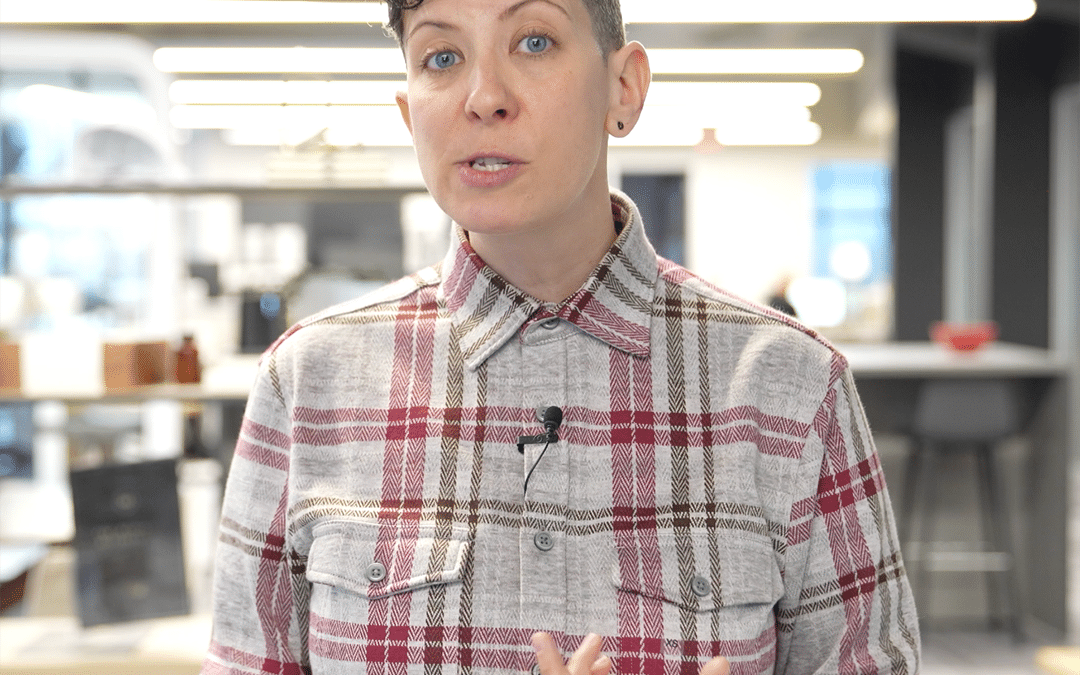Beginning Marketing Maturation Through Team Operations
ASHLEY BOOTH
Video Transcript
I want to talk a few minutes about increasing the maturity of your marketing organization through marketing operations. This is for leaders of marketing or those who own marketing inside of a business with a low level of maturity. That means you are a team of one or you are a team of zero and you are starting from a team of one. Maybe you’ve got one junior-level person on the team. This is a problem that we solve with clients a lot. They come in and they’re like, Hey, I’ve got these people, I’ve got these resources, but I don’t feel like I have any rigor. I don’t really know where to start. And it feels really overwhelming to try to professionalize my marketing, grow our junior-level talent, figure out where to hire, figure out what my technology should be. And it’s just a lot, and it’s just the pile on the table. And I’m always like, Let’s take a step back and let’s just start with the operations so that you set a strong foundation for today.
So when you’re able to start scaling, you’ve got that foundation and it makes a lot easier to get bigger and do more faster, with that rigor that you need. A really good place to start is thinking about your planning cycle. You want your marketing planning to align with business planning. If the business wants to increase revenue in a certain customer segment or industry or region, you want to make sure that your primary marketing activities are driving towards that. If your business doesn’t have a great planning cycle, then create your own. Get as many answers as you can from leadership and those around you, and then make sure that you’re thinking about things at minimum quarterly. It is really, really important to not only be thinking about the day and the week and the month ahead but taking a step back at least once a quarter to look as far out as you can. Even if you can’t see two years,
three years, five years in advance, if you have a good sense of where the company wants to go, it helps you take steps back to be like, What do I need to be doing this month, this quarter, this year to make sure that we get there?
Element Three uses the Entrepreneurial Operating System, EOS, it doesn’t matter. We just use those principles to help clients do these things. So you set a weekly meeting. I don’t care if you’re a team of one, you need an hour-long meeting. It needs to be the same day. It needs to be the same time every week. It keeps yourself honest. And as you add people to the team, you’ve already got that rigor, you’ve already got that set. In that weekly meeting, you need to be going over what you need to be doing that week. You need to be thinking ahead. And you also need to have a scorecard. What are those leading and lagging indicators that you need to be tracking so that you know that you’re making an impact? Now, you might be thinking how do I know what my scorecard should be? Well, think about what are the business objectives, what is being asked of marketing, and what do you need to be doing in terms of behaviors? Do you need to be creating a certain number of pieces of content each week? Do you need to be posting on social X number of weeks? Do you need to be supporting sales in a certain way? Those are more like leading indicators? Do you have the right behaviors that are going to drive the right results? And then you should have some KPIs that are lagging indicators, which is revenue in pipeline or clickthrough rate.
Start with the business goals. Think about what’s going to make the most impact and then be tracking those every week. Don’t worry about getting your scorecard perfect the first time. What’s most important is that you get into the behaviors and then you can be refining what you’re tracking over time. Second, think about gathering your data. What is the data that you have available to you? Google Analytics, your email platform, sales data, you want to understand what you have and where are the gaps. You’re probably not going to be able to make a big impact on changing your tech stack or doing a bunch of research about your customers to start. But knowing what you’ve got and where the gaps are to start
are really important. It also gives you the ability to start keeping track of like, Oh, I really wish I could answer this question about my customer, Oh, I really wish I could do this. You start making those and as you get organizational buy-in around marketing and your budgets get larger, you will be like, I know exactly what I want to do for this budget. I know exactly how I want to use this because I want to get answers to these questions that we’ve never been able to ask before. The next thing that you should be doing is getting really close with sales. It doesn’t matter if you’re really sales driven organization or not. It is very important for sales and marketing to be working together. That means developing relationships with sales leaders, sitting in on sales calls, even talking to the support team, understanding what kinds of support questions are coming in. What does the sales team need in terms of materials? Are there case studies that they’re missing? Are there proof points that they’re missing? Are there materials that would really help the support team to head off some questions on the website before somebody even uses the chat or calls in?
These are things that you can be doing to gain organizational buy-in around marketing. The more that you reach out, the more that you show what marketing can do for the rest of the organization, not only in terms of capturing demand, generating demand, but also for your current customers, for sales, for support. The more that people will start to see that marketing can help across the organization throughout the customer lifecycle, and it just gives you more and more credibility inside of the organization. If you have a low level of marketing maturity, there is a strong likelihood that leadership and others inside of the organization either don’t believe in marketing, don’t understand what marketing can be doing.
There are two things that are really important for you to remember. One is to not just throw a bunch of numbers and statistics at leadership. Sometimes we see that people are just — they have a big Google data studio dashboard or a bunch of slides, and they’re just information overloading leadership to be like, look at everything that we’re doing, look at all the activities and it’s like, they don’t care and they don’t understand. And the more they don’t understand what you are doing that is impacting the business, the more that they’re like, I don’t really know what’s going on over there. Again, you want to go back to what are the business goals, what are the most important things that marketing should be doing and keeping it really, really tight. When you are sharing out to leadership in the organization what marketing is doing, stay really focused on those few things. If somebody wants to know more about everything that you’re doing, you can have that. You could talk about that all day long but keep it to like the top really three things, and that will make a much bigger impact.
Sharing Expertise
What good is learning something if you don't pass it on? You can tap into what we know right now – from dealer programs to determining brand architecture – and you don't have to give us a thing.




